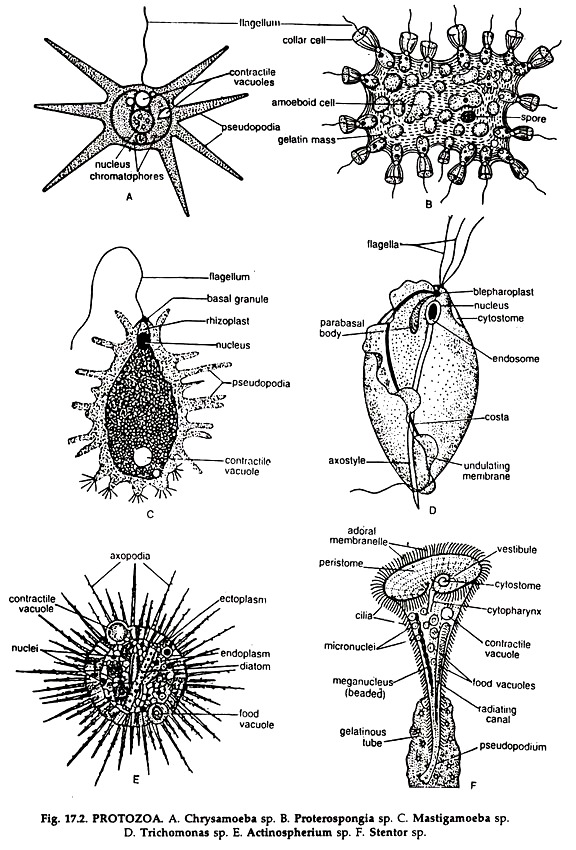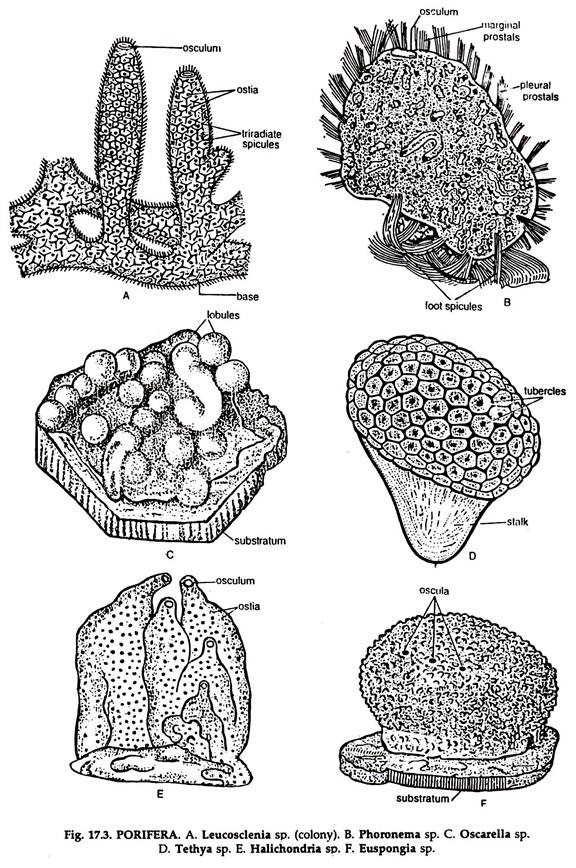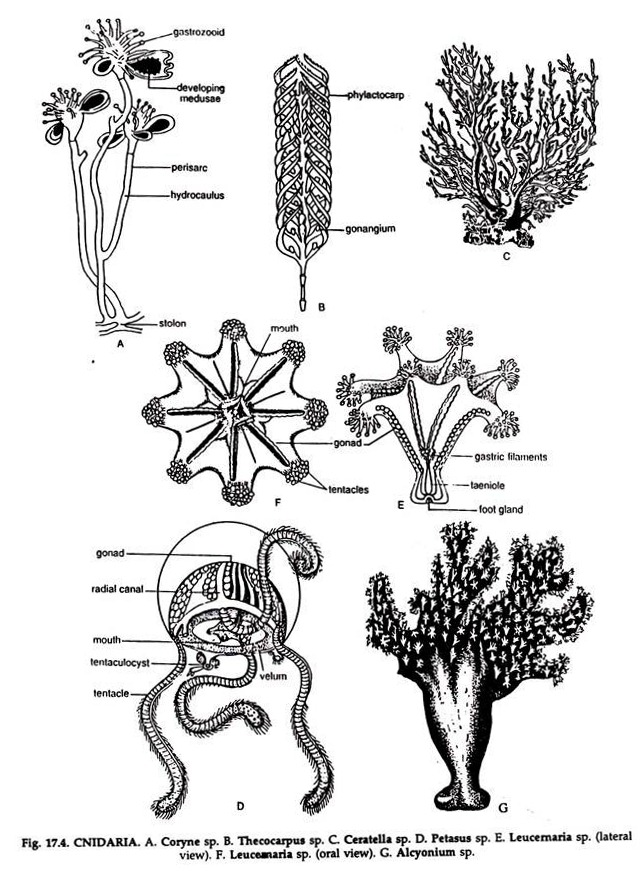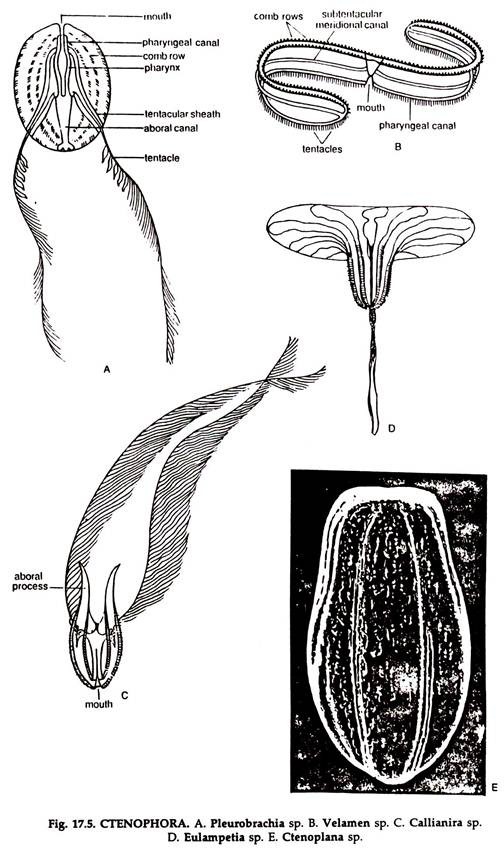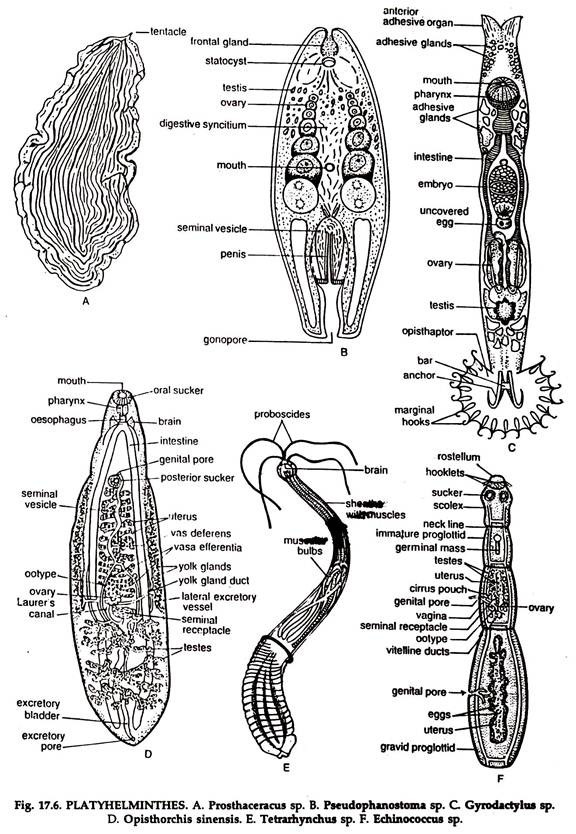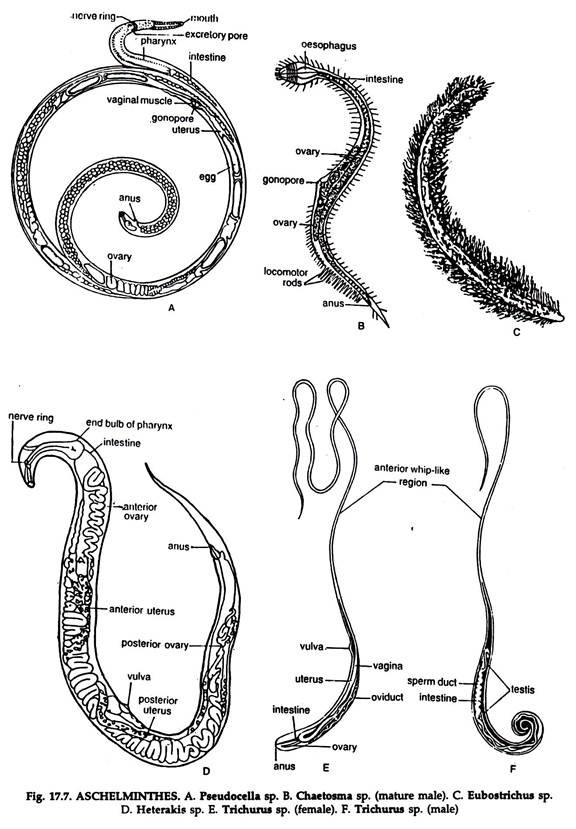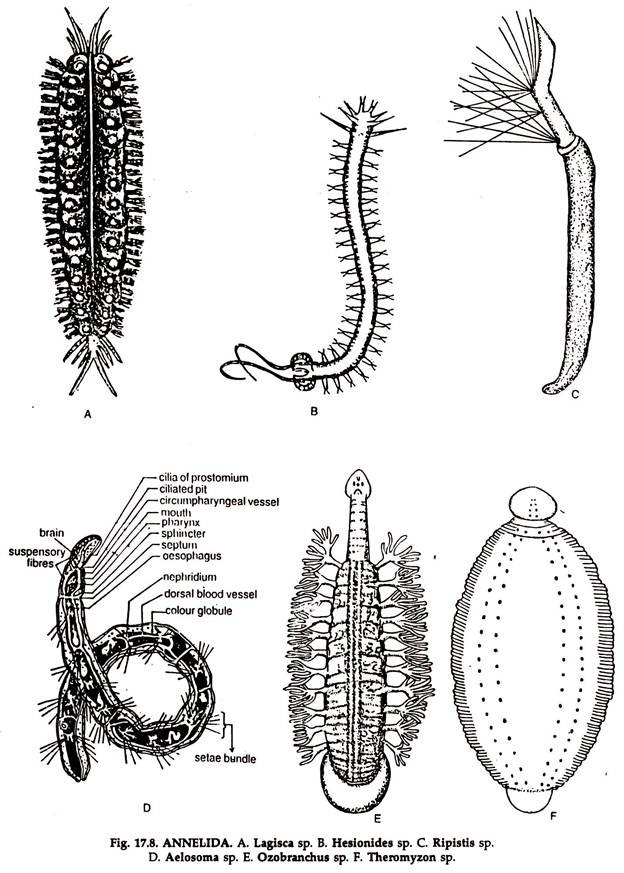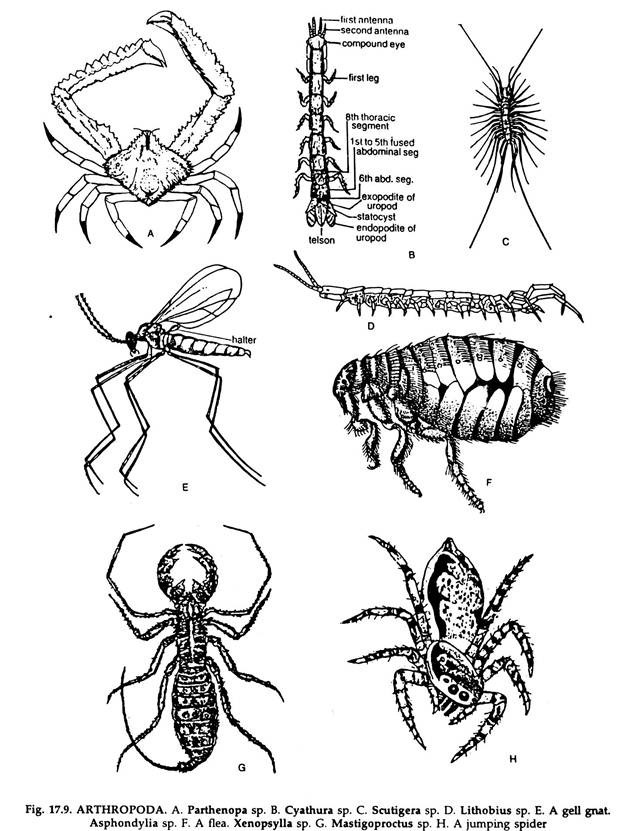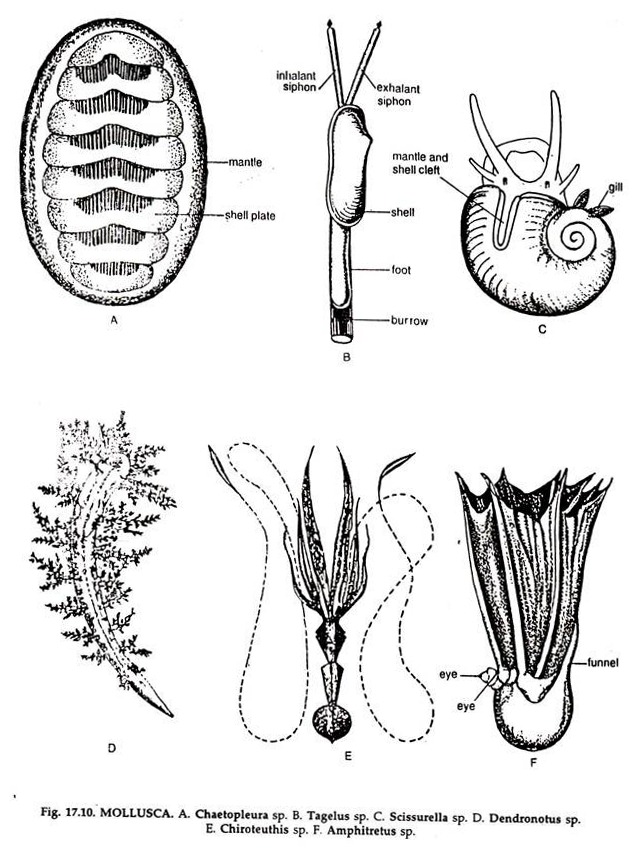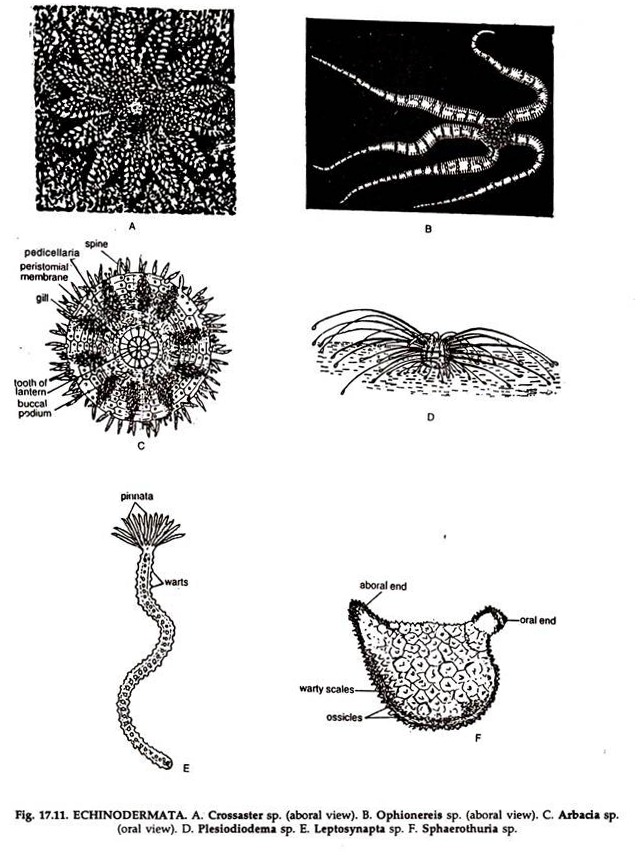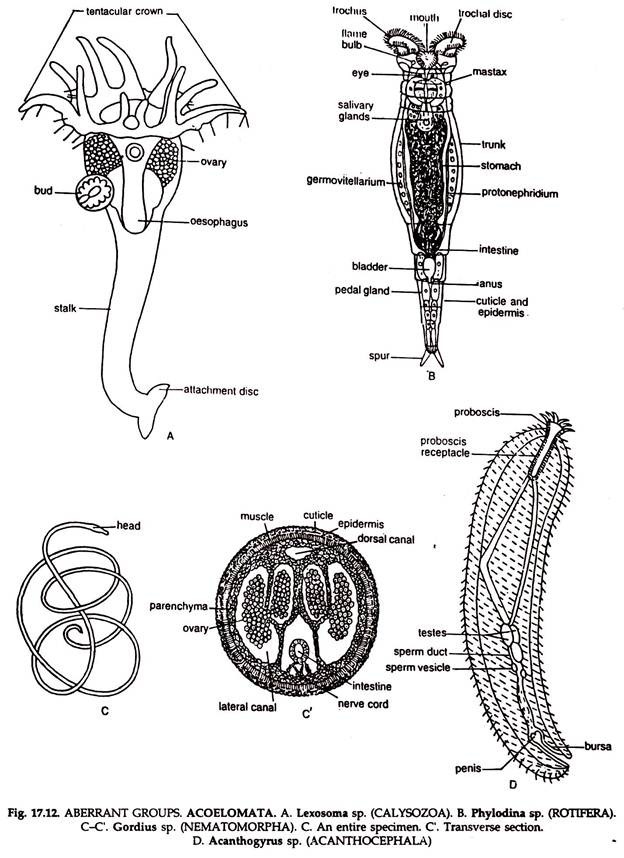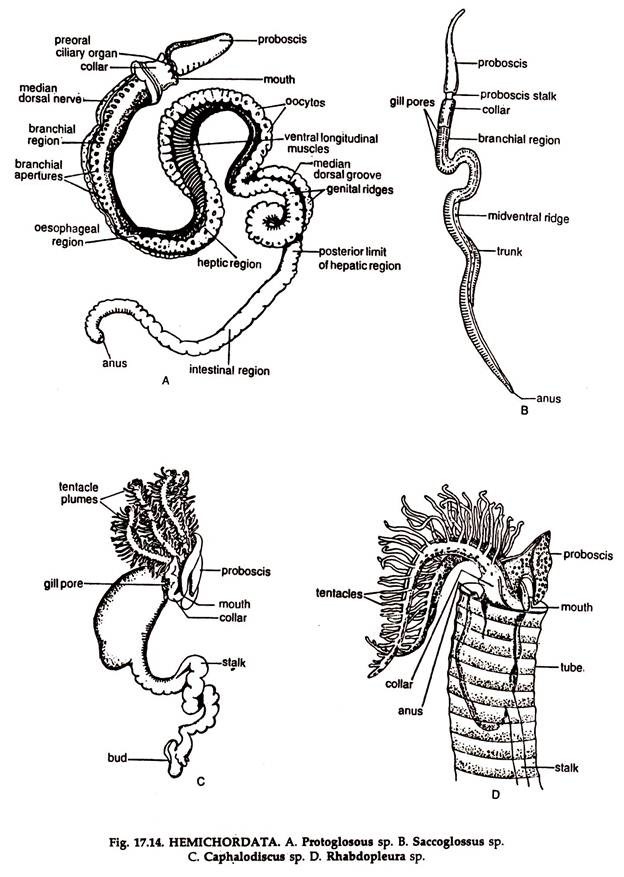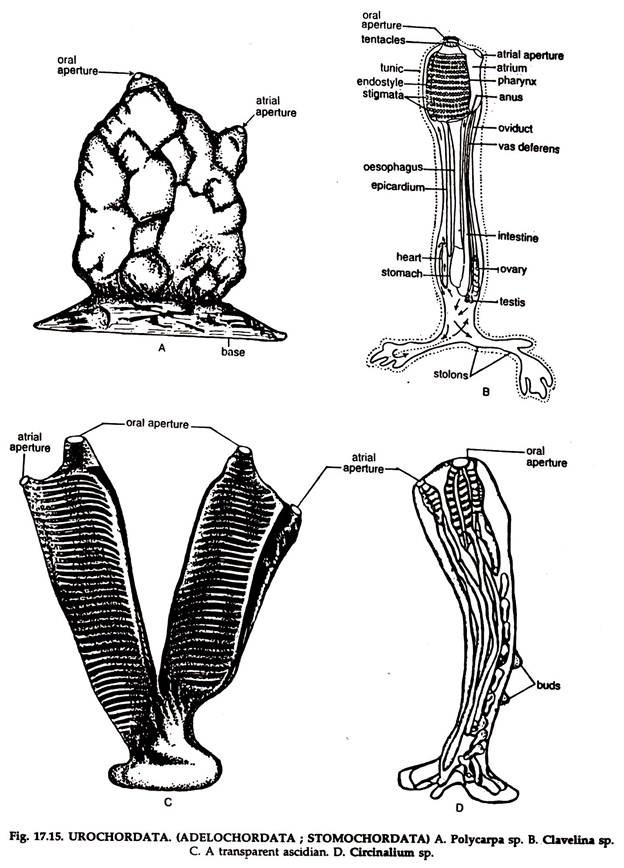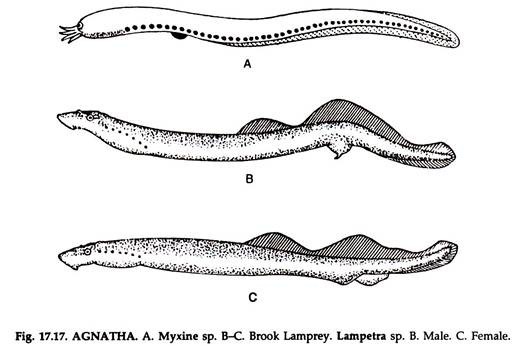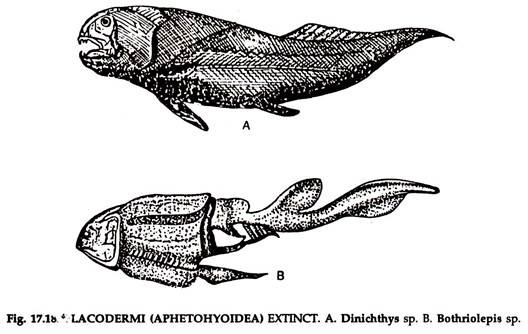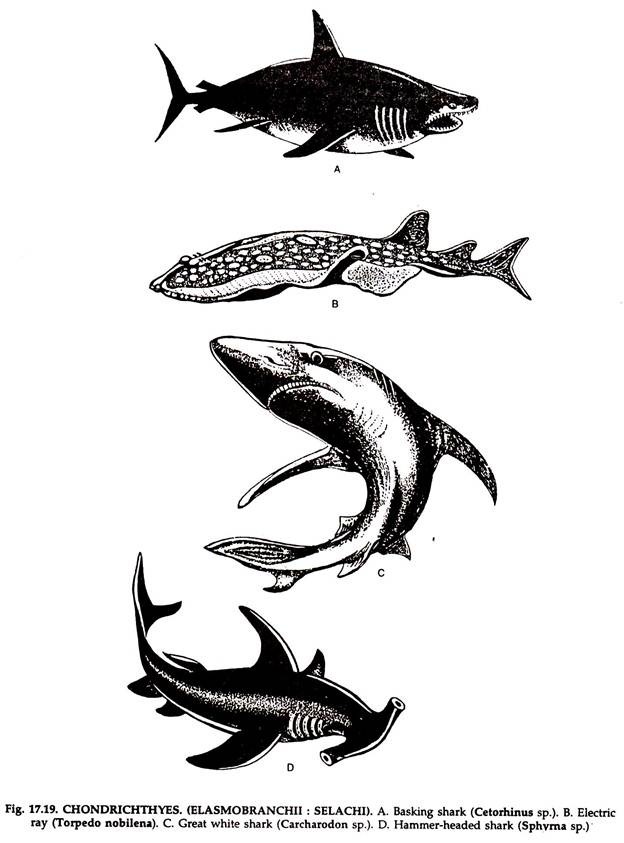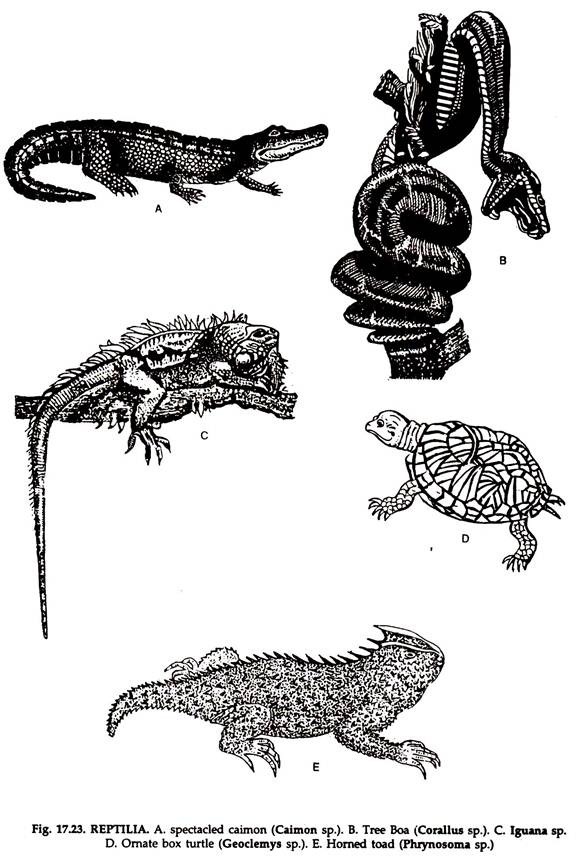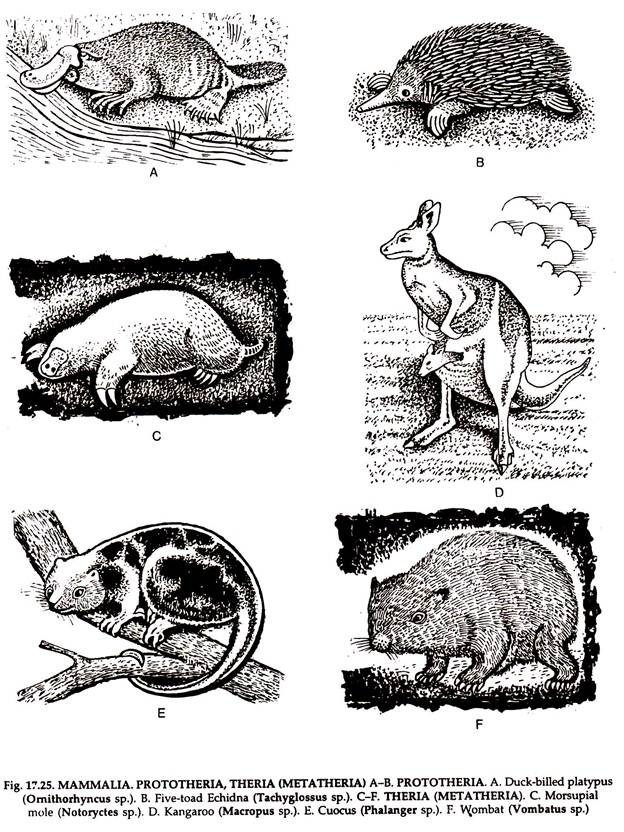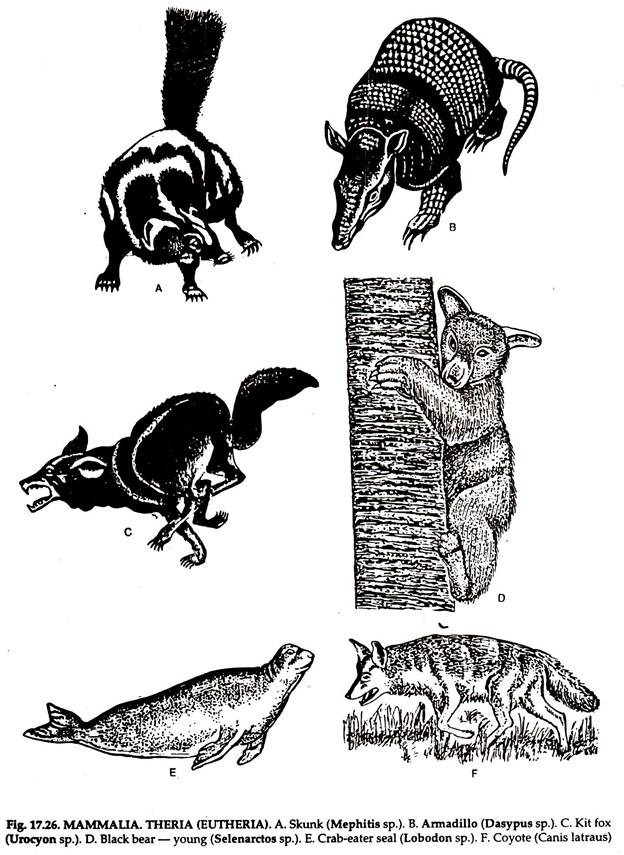In this article we will discuss about the subdivisions of the kingdom animalia.
Subkingdom Protozoa:
Small, unicellular (acellular); (Fig. 17.2) free-living or parasitic; terrestrial, fresh water, marine; locomotory organelles pseudopodia, flagella, cilia; reproduction both asexual and sexual.
Phylum Sarcomastigophora:
ADVERTISEMENTS:
Locomotory organelles flagella, pseudopodia; nucleus single type; sexuality essentially syngamy.
Phylum Labrynthomorpha:
Marine or estuarine; trophozoite stage; cytoplasmic network with spindle-shaped or spherical non-amoeboid cells; zoospores heterokont.
ADVERTISEMENTS:
Phylum Apicomplexa:
Apical complex present; cilia absent; syngamy occurs; all parasitic.
Phylum Microspora:
Spores unicellular with imperforate wall; mitochondria absent; obligatory intracellular parasites.
ADVERTISEMENTS:
Phylum Ascetospora:
Spores multicellular; sporoplasm one or more; polar capsules or polar filaments absent; parasitic.
Phylum Myxozoa:
Spores of multicellular origin with one or more polar capsules and sporoplasm; with 1, 2, 3 (rarely more) valves; parasitic.
Phylum Ciliophora:
Simple cilia or compound ciliary organelles; nuclei two types; binary fission transverse; budding and multiple fission occur.
Subkingdom Metazoa:
Multicellular; diplo- or triploblastic; acoelomate or coelomate; notochord and vertebral column may or may not be present.
Phylum Porifera:
ADVERTISEMENTS:
Sedentary (Fig. 17.3), aquatic, mostly marine; diploblastic; a single cavity within the body often forming a canal system; skeleton made of sponging fibres and siliceous or calcic spicules; reproduction by gemmation or sexual; larvae free swimming.
Phylum Cnidaria:
Diploblastic; radially symmetrical (Fig. 17.4); presence of a coelenteron with a single aperture; cnidocytes present; reproduction both asexual and sexual.
Phylum Ctenophora:
Radially symmetrical (Fig. 17.5); mesoderm present; coelenteron with a single aperture; cnidocytes absent; tentacles two and retractile; sense organ single, in the aboral pole; hermaphrodite.
Phylum Platyhelminthes:
Bilaterally symmetrical; devoid of exoskeleton structures (Fig. 17.6); triploblastic; coelom absent; gut when present, bifid; excretion by flame cells; hermaphrodite with complex reproductive organs; both parasitic and free-living.
Phylum Aschelminthes:
Triploblastic with a pseudocoel; body covered with a proteinous cuticle (Fig. 17.7); alimentary canal free with ectodermal fore and hindgut and endodermal midgut; sexes separate; female organs paired, male organ single; both parasitic and free-living.
Phylum Annelida:
Body elongated, segmentation metameric (Fig. 17.8); locomotory organs setae or Para podia; head consists of a preoral prostomium and a postoral peristomium; alimentary canal straight with distinct zones; mouth and anus opposite; true coelom present; vascular system closed; excretion by segmental nephridia, nervous system well-developed; development director with a trochophore larva.
Phylum Arthropoda:
Bilaterally symmetrical; appendages jointed; chitinous cuticle with flexible joints form exoskeleton (Fig. 17.9); haemocoel functions as vascular system; heart dorsal to gut; respiratory organs gills or tracheae or book-lungs; sexes separate; metamorphosis often present.
Phylum Mollusca:
Bilaterally symmetrical, at least in early stages (Fig. 17.10); an external shell often present; a mantle encloses the body; a radula present in the majority; coelom restricted to pericardium; respiratory organs—gills or lung or both gills and pulmonary sac; larvae—either trochophore or veliger.
Phylum Echinodermata:
Coelomate, marine, radially symmetrical; exoskeleton of calcareous plates or ossicles with movable or immovable calcareous spines (Fig. 17.11); coelom converted into a water vascular system; alimentary and nervous system well-developed; larvae bilaterally symmetrical and free-swimming.
Aberrant groups:
Certain metazoans neither fit well in the hierarchy of invertebrates nor do they possess notochord. Since not much is known about their relationship with other groups, it is customary to assign them a special status —the aberrant groups. Based on the absence or presence of coelom they have been divided into two major groups.
Acoelomate groups (Fig. 17.12):
Coelom absent.
Phylum Calyssozoa (Entoprocta):
Sedentary; solitary or colonial; mostly marine; body cup-shaped, stalked with a circlet of tentactes; epistome overhangs the mouth. Examples: Pedicellaria, Myosoma, Lexosoma, etc.
Phylum Rotifera (wheel animalcule):
Microscopic; a retraactile trochal disc at the anterior end; mastax present in pharynx; body cavity large; excretory organs a pair of flame cells; sexes separate. Examples: Rotaria, Macrochaetus, Asplatichna, Ascomorpha, Philodina, etc.
Phylum Nematomorpha:
Body long, thread-like; both fresh water and marine; a pharyngeal ring constitutes nervous system; sexual stage free-living, asexual stage parasitic. Examples: Gorchius, Nectonema, etc.
Phylum Acanthocephala:
Body cylindrical; proboscis at the anterior end; digestive system, excretory pore absent; no sense organs; intestinal parasites of vertebrates. Examples: Echinorynchus, Acanthogyrus, etc.
Coelomate groups (Fig. 17.13):
Coelom present.
Phylum Phoronidea:
Body cylindrical, worm-like, un-segmented; enclosed in a membranous tube; horseshoe-shaped lophophore bears a crown of numerous ciliated tentacles; mouth and anus separated by a short space; nephridia two; Examples: Phorohis, Phoronopsis, etc.
Phylum Brachiopoda:
Body enclosed in a shell with two valves- dorsal and ventral; lophophore large and complex; mouth crescentic; anus may be absent; sexes separate; marine. Examples: Lingula, Cratiin, Magellania, etc.
Phylum Chaetognatha:
Body small, slender, nearly cylindrical, transparent; head, trunk and tail distinct; locomotory organs caudal and horizontal lateral fins; marine. Examples: Sagitta, Spadella, etc.
Phylum Bryozoa:
Branched, colonial; minute individuals located in separate chambers; ciliated tentacles around the mouth, alimentary canal U-shaped. Examples: Plumatella, Bugula, etc.
Phylum Pogonophora:
Tube dwellers, inhabiting deep sea; body bilaterally symmetrical with an anterior protosome bearing one to many tentacles; a short mesosome and a long metasome or trunk with rings or adhesive papillae; no mouth, digestive tract and anus in the adult; coelom unlined, that of protosome extending into tentacles, the mesosome and trunk, each with a pair of compartments; circulatory system closed, with a middorsal and a mid-ventral vessel; vertical vessel enlarged in protosome as a heart; coelomoducts two, in the protosome, opening to the exterior; nervous system in epidermis, enlarged into cephalic lobe from which arise tentacular nerves and a mid-dorsal unpaired nerve cord; sexes separate, gonads paired. Example: Lamellisabella.
Phylum Hemichordata:
Worm-like body with distinct proboscis, collar and trunk (Fig. 17.14); gill slits at the anterior end of the trunk; coelomic pouches, notochord, dorsal nerve cord present; marine, burrow dwellers.
Phylum Chordata:
Bilaterally symmetrical, triploblastic, coelomate; notochord at some stage of life; vertebral column in the majority; pharyngeal gill clefts either throughout life or in the embryo; dorsal spinal cord hollow; neurocoel present in central nervous system.
Subphylum Urochordata:
Sedentary, enclosed in a cuticular test (Fig. 17.15); dorsal nervous system, notochord, gill slits only in larval stage; heart tubular, ventral; metamorphosis retrogressive.
Subphylum Acrania (Cephalochordata):
Body wall with over fifty myotomes; gill slits numerous (Fig. 17.16); notochord persistent; hollow nerve cord dorsal; larval form asymmetrical.
Subphylum Craniata (Vertebrata):
Presence of endoskeleton; vertebral column present; a cranium present; paired lateral appendages; a posterior tail usually present; vascular system closed.
Superclass Agnatha:
Mouth round, suctorial, without jaws; paired fins absent; fins without fin rays (Fig. 17.17); notochord persistent; nasal organ unpaired; conus arteriosus, spleen, distinct pancreas, sympathetic nervous system, genital ducts absent.
Superclass Gnathostomata:
Limbs two pairs; mouth with upper and lower jaws.
Class Placodermi (Aphetohyoidea):
Extinct.
Primitive forms; hyoid arch acts as branchial arch; jaws attached to cranium by ligament (Figs. 17.18 & 33).
Class Chondrichthyes (Elasmobranches):
Dermal scales placoid; fins with fin rays; gill slits open directly to the exterior; no operculum; skeleton cartilaginous; spiral valve in intestine (Fig. 17.19).
Class Osteichthyes (Teleostomi):
Bony fishes; dermal scales cycloid in the majority, ctenoid in some, cosmoid in others; fins with fin rays; operculum present; gill filaments attached to gill arches; lungs present in some in addition to gills; skull hyostylic; jaw suspended by mandibular arch.
Subclass Actinopterygii:
Scales reduced to thin bony structures; the bony or cartilaginous supports of the fin reduced; fins outside the body wall supported by fin rays alone; dorsal fin single; tail usually homocercal; bulbous arteriosus prominent and elastic; pineal apparatus rarely occurs (Fig. 17.20).
Subclass Crossopterygii:
Dermal scales cosmoid; pectoral fin supported by jointed median axis; caudal fin with epichordal lobe; nostrils within the mouth; lung present (Fig. 17.21).
Class Amphibia:
Occipital condyles two; heart with a sinus venosus, two atria, one ventricle and conus arteriosus; gills in larva; lungs in the adult; metamorphosis present (Fig. 17.22).
Class Reptilia:
Scales epidermal; occipital condyle one; heart with sinus venosus, two atria, one partially divided ventricle; land eggs large with calcareous shell; amnion and allantois present (Fig. 17.23).
Class Aves:
Warm blooded, oviparous, feathered biped; forelimbs modified to wings (Fig. 17.24); pectoral muscles large and used in flight; air sacs present; single occipital condyle; skull light without sutures; teeth absent.
Class Mammalia:
Body covered with hair, at least in the early stage; mammary glands present (Figs. 17.25, 17.26); diaphragm present; occipital condyles two; teeth heterodont, thecodont; viviparous; placenta for foetal nourishment.
